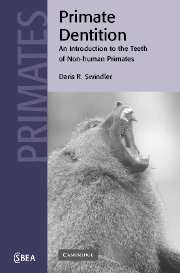8 - Hylobatidae
Published online by Cambridge University Press: 05 October 2009
Summary
Present distribution and habitat
The Hylobatidae consists of a single genus, Hylobates, which currently has 11 species. The genus Symphalangus, the siamang, is now included with the gibbons and known as Hylobates syndactylus. Gibbons are the smallest and the most diverse of living apes. They live in monogamous family groups, but see Falk (2000) for different current views on the subject. The males and females of the same species are about the same size and have canine teeth of about equal length.
Gibbons live throughout the evergreen rain forests of Southeast Asia, China, Burma, Sumatra, Borneo and Java, as well as on several of the smaller islands. They are arboreal brachiating primates, preferring the middle to the upper canopy in the forests. In the trees gibbons are the most acrobatic of all primates, with the spider monkey of the New World a close second. When on the ground, they walk bipedally with arms raised above their heads for balance.
Dietary habits
The gibbon diet is mainly fruit (50–70%), although the siamangs apparently eat more leaves (up to 59%) than other gibbons (Curtin and Chivers, 1978). In addition, gibbons eat termites, caterpillars and animal prey. As with most primate species, the diet varies seasonally as well as from locality to locality.
- Type
- Chapter
- Information
- Primate DentitionAn Introduction to the Teeth of Non-human Primates, pp. 147 - 152Publisher: Cambridge University PressPrint publication year: 2002



